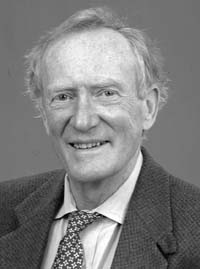A Letter to the Editor ...
What Kinds of Scholarships are Most Appropriate for this University Center?

With a fine national ranking by the Graham/Diamond study in hand, a doctoral program review in progress, a new President at the helm, and other senior administrative appointments soon to be made - this is an excellent time for the University at Albany to ask itself fundamental academic questions. We can mull them over in the optimistic spirit that we're on the academic map, on the move, and headed for even higher ground. I offer my answer to the fundamental question above to stimulate discussion, knowing that others may think I am way off the mark, for their fields or by their values.
Let me say immediately, that I respect the right we all have to pursue any kind of scholarship we want. I don't propose to infringe this academic freedom entirely. But I do think that some kinds of scholarship are more nurturing for the University and its students, and ought to be supported preferentially (not exclusively) by distribution of our University resources.
I think the most appropriate kinds of scholarship for this University at this time are work that builds the University's academic reputation in the minds of scholars elsewhere, and work that sends well-prepared students out the door.
The University's reputation can be built most effectively and permanently by work that advances disciplines or stakes important claims in fresh, interdisciplinary areas. It is not built so effectively by mere practice of more or less familiar approaches to more or less standard problems. The kind of scholarship we need is the kind that writers of textbooks feel they must include in their next editions, or that teachers of graduate seminars elsewhere feel they must include in their reading lists. It is scholarship that adds to, or sharpens, or tosses out, conceptual or analytical tools in our scholarly toolboxes. It is seminal work. This kind of scholarship may or may not bring in large amounts of external funding, and it may or may not create the kinds of headlines that build the University's reputation in the minds of legislators and the public-at-large. It is fundamental work that, in the end, undergirds all the wonderful products of more applied research. In the creative arts, I have less idea, but I suppose we need creation that is conspicuous for its fresh wit or wisdom, and is beautiful in some way.
To send well-prepared students out the door, we need scholarship that builds stronger minds, communication skills, and analytical expertise, not just in our graduate students, but in undergraduates as well. What kinds of scholarship are not appropriate to these goals? Scholarship where the students involved are mostly technicians, learning procedures but not learning to think or communicate powerfully. Scholarship where the participants cannot see the woods for the trees. Scholarship where the "dissertation topic" is indistinguishable from what the graduate will do next, in their first job in a non-research career. A University Center should not just be a trade-school, even in its units devoted to professional preparation.
Are any of these ideas broadly appealing to faculty members or to administrators? Can any of them be used in practical, fair ways, to redirect resources? Can any of them influence the research directions chosen by individual faculty members? And how do we deal with the conflict between needing to do "appropriate" scholarship and knowing that "less appropriate" scholarship is often what pays off best in grant money, or political support?
Winthrop Means
Department of Earth and Atmospheric Sciences
which may be edited for space reasons.
Please forward letters to the editor to: [email protected]

